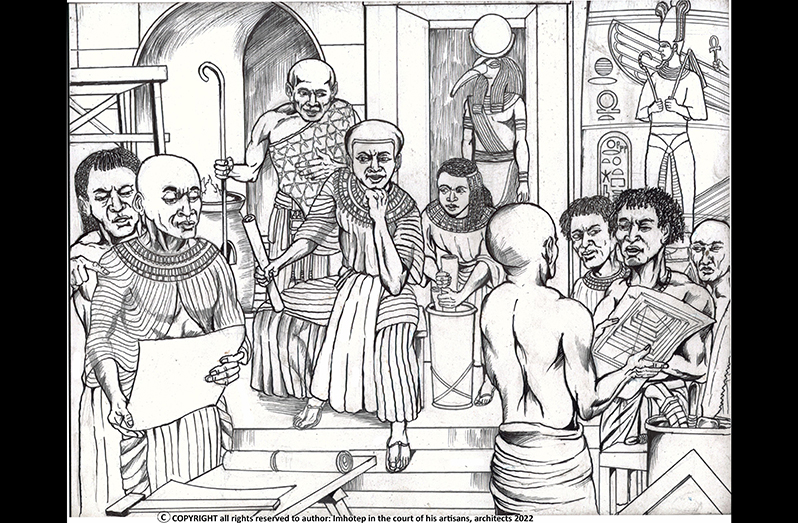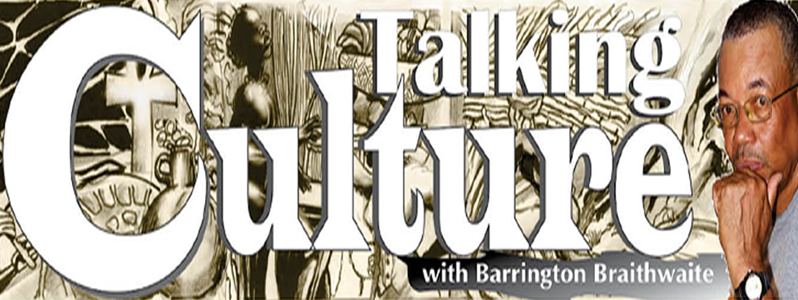Though in Guyana, August 1, the ‘Emancipation’ commemoration is predominantly centered on the African Trans-Atlantic Slave Trade, and the creation of the so-called “New world’s” economic reality for Europe and the colonised Americas upon the collective shoulders of Africans and the Mongolian peoples of the twin continents.
The context of the meaning of emancipation, however, reaches across humans to the legacies of millennia. Through cultural and religious fictions that have dominated variations (races) of humankind to this day, many have found no enabling structures of strength or leadership to stand on, to refute the belief systems, both secular and religious, that have enslaved such peoples in a worse bondage than physical chattel slavery.
The slavery of the imagination and the perceptions of the daily awareness, is by all means a more devastating condition. An example that is relevant as a stable case study that can easily be relied upon, are the efforts through institutions that benefitted from slavery to deny, demean and reconstruct a relative spiritual and historical past on the awareness of peoples of African heritage. From all the varied cases that exist, in this article I will refer to Egypt (its Greek name) or the original Kemet or Khemet and the Sudanic cultures.
This area of the African reality became a focus of serious attention to the slave trading nations of Europe in earnest with the invasion of Egypt(Khemet) during Napoleon’s campaign May 1798 -October 1799 ( though Napoleon was not the first of the Europeans to visit the then ruins of Khemet, his entrance did launch a reassessment of that civilisation) and a tremendous fashion and Art influence in France, and among other Europeans.
 The Arabs considered the monuments of Khemet and Pyramids and ruins of Kush in the Sudan as Genii realms. They were the last of foreign invaders in more than Khemet’s 5,000-year existence to set foot on its soil, some 500 years ago and remain there. Why should an emancipation effort exist at a group, or at an individual level, on what is exempted, what is ignored, and how to understand the statements that define- before “Slave Trade” and before colonial Africa, and the Afro-Americas pre and post-emancipation period?
The Arabs considered the monuments of Khemet and Pyramids and ruins of Kush in the Sudan as Genii realms. They were the last of foreign invaders in more than Khemet’s 5,000-year existence to set foot on its soil, some 500 years ago and remain there. Why should an emancipation effort exist at a group, or at an individual level, on what is exempted, what is ignored, and how to understand the statements that define- before “Slave Trade” and before colonial Africa, and the Afro-Americas pre and post-emancipation period?
It is simply because continuous and ongoing references that reiterate falsifications that in many cases have become current second nature assertions by others will not correct itself, and are still common. For example, recently, a local newspaper columnist mockingly lamented the absence of African businesses, void of any references to the volumes of logical explanations, post-emancipation to pre and post-Independence that are cultural and historical, and even to the current obvious diversities. Because it is easier to write a few lines from a pool of stereotypes on a subject and declare it profound, than to reach to the existing volumes of records. This is harmful, especially if it is obvious that sections of the group referred to are themselves immediately ignorant of their own timeline.
In the late 18th century, the Frenchman Count Constantine De Volney wrote a book in France named ‘The Ruins of Empires’ that described his journeys to Khemet between 1783 and 1785. He wrote, “There are a people, now forgotten, who discovered while others were yet barbarians, the elements of the arts and sciences. A race of men, now ejected from society for their sable skin and frizzled hair, founded on the study of the laws of nature, those civil and religious systems which still govern the universe.” His book became very famous and an English and American edition was published, but Volney discovered, much later as he mastered the English language that this and other related text were omitted in the English/American publications.
W.E.B Du Bois clarified the sinister context of this action- “There can be but one explanation for this vagary of 19th-century science. It was due to the slave trade and Negro slavery. It was to the fact that the rise and support of capitalism called for rationalisation based upon degrading and discrediting the Negroid peoples. It is especially significant that the science of Egyptology arose and flourished at the very time that the cotton kingdom reached its greatest power on the foundation of American Negro slavery.”-See Nile Valley contribution to Civilisation by Anthony Browder. Therefore, the principles and realities of Emancipation rest in the cleansing of the falsified ‘Timeline’ and the facts consciously reintegrated.
Khemet-(Egypt) has currently merited a study to explore how they maintained a functioning civilisation for over 5,000 years, as the envy of the ancient world. One of its greatest sons was Imhotep, the original father of medicine, son of the architect Kanofer and Khreduonkh. He was versatile in both the Arts and Sciences. He was an architect, poet and philosopher, one of his memorable sayings is; “Eat, drink and be merry, for tomorrow we shall die. Imhotep was the Third Dynasty’s (2630-2611BC) architect, who built a tomb for Pharaoh Djoser, with changes and adjustments from a box-like tomb. Imhotep changed it into a six-stepped Pyramid, with underground chambers. This was Khemet’s (Egypt’s) first pyramid. The pyramid was covered with prepared limestone that made it sparkle in the strong sunlight. It was enveloped by ceremonial buildings and courtyards, protected by a sturdy limestone wall, which is still a mystery to archaeologists. As a healer, Imhotep was worshipped not only in Khemet, but also in Greece and later Rome. Ironically, early Christians revered him as the Prince of Peace. Have a productive Emancipation month 2022, in the process of “emancipation from mental slavery” into personal self-awareness.





.jpg)








